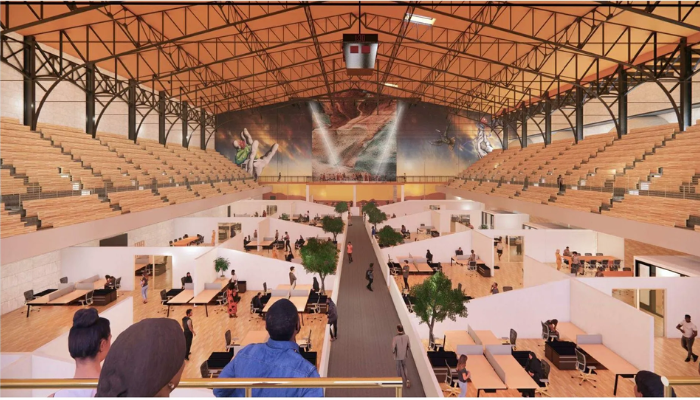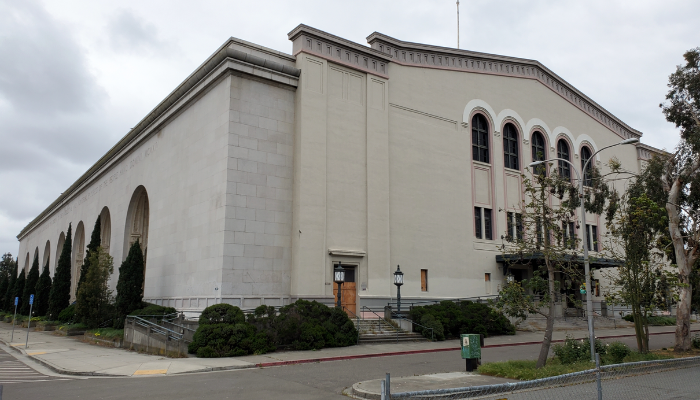The henry j kaiser convention center is one of Oakland’s most iconic landmarks, boasting a storied history and a promising future. Located in the heart of the city, this grand structure has played host to some of the most significant cultural, political, and entertainment events in the Bay Area. Once a bustling hub for concerts, community gatherings, and political rallies, the convention center has undergone transformations over the years. Now, with revitalization efforts underway, the historic venue is poised for a new era of significance. In this article, we’ll explore its history, architecture, past events, redevelopment plans, and its role in Oakland’s future.
The Rich History of Henry J. Kaiser Convention Center
A Monument to Civic Pride
Originally known as the Oakland Municipal Auditorium, the Henry J. Kaiser Convention Center was built in 1914. Designed by prominent architect John J. Donovan,henry j kaiser convention center the Beaux-Arts-style building was intended to serve as a public gathering space for various cultural and political events. The venue quickly became an integral part of Oakland’s social fabric, hosting everything from civic meetings to grand musical performances.
Renaming and Legacy
In 1984, the convention center was renamed in honor of Henry J. Kaiser, a pioneering industrialist and philanthropist who played a crucial role in shaping the Bay Area’s economic landscape. The name change reflected Kaiser’s immense contributions, particularly in shipbuilding, healthcare, and public works. Despite its closure in 2005 due to budget constraints, the center remains an important part of Oakland’s architectural and cultural history.
Architectural Brilliance and Key Features
Beaux-Arts Elegance
The henry j kaiser convention center is an architectural marvel, showcasing Beaux-Arts design elements that emphasize grandeur and symmetry. The exterior features intricate decorative moldings, arched windows, and a commanding presence that makes it a standout among Oakland’s historic structures. The grand façade, complemented by classical columns and sculptural details, highlights the craftsmanship of early 20th-century architecture.
Interior Design and Event Spaces
Inside, the convention center is equally impressive. The centerpiece is the 5,000-seat Oakland Auditorium, which has hosted numerous concerts and performances over the decades.henry j kaiser convention center Additionally, the venue includes the Calvin Simmons Theatre, a 1,500-seat theater named after the late conductor of the Oakland Symphony Orchestra. The spacious hallways, elegant chandeliers, and detailed ornamentation contribute to the venue’s timeless appeal.
Iconic Events and Cultural Significance
Political and Social Gatherings
Over the years, the Henry J. Kaiser Convention Center has served as a venue for major political events. Martin Luther King Jr.henry j kaiser convention center delivered one of his powerful speeches here, further solidifying the center’s place in civil rights history. The venue has also been a key location for labor union gatherings, civic discussions, and community celebrations.
Entertainment and Sports Events
The convention center has welcomed a diverse range of entertainment icons,henry j kaiser convention center including musicians, actors, and athletes. Legendary bands like The Grateful Dead and Metallica performed here, creating unforgettable experiences for fans. In addition to concerts, the venue hosted wrestling matches, boxing events, and other sporting competitions, reinforcing its role as a multi-purpose entertainment hub.
Revitalization and Future Prospects

Restoration Efforts
After its closure in 2005, various proposals emerged to restore and repurpose the Henry J. Kaiser Convention Center. In recent years,henry j kaiser convention center the City of Oakland has partnered with developers to transform the space into a mixed-use facility. The redevelopment plan aims to preserve the historical integrity of the building while introducing modern amenities.
The Vision for the Future
The future of the convention center looks promising, with plans to accommodate performance spaces, offices, and community engagement areas.henry j kaiser convention center This transformation is expected to breathe new life into the venue, making it a cultural and economic asset for Oakland. With a renewed focus on accessibility and sustainability, the revitalization will ensure that the Henry J. Kaiser Convention Center remains a vital part of the city for generations to come.
The Role of the Convention Center in Oakland’s Growth
Economic and Cultural Impact
The revival of the Henry J. Kaiser Convention Center will significantly impact Oakland’s economy by creating jobs, attracting tourists,henry j kaiser convention center and fostering local businesses. As a landmark destination, it will serve as a catalyst for economic growth, benefiting surrounding neighborhoods and businesses.
A Community-Centric Approach
The new iteration of the convention center will emphasize community involvement. Spaces will be dedicated to arts programs, local performances, and educational initiatives, ensuring that it remains a place for Oakland residents to gather, create, and celebrate their cultural heritage.
Conclusion
The Henry J. Kaiser Convention Center stands as a testament to Oakland’s rich history, architectural grandeur, and cultural vibrancy.henry j kaiser convention center From its early days as a civic auditorium to its upcoming transformation into a dynamic community space, this historic landmark continues to evolve while preserving its legacy. As restoration efforts progress, the convention center is set to reclaim its place as a central hub for arts, culture, and community engagement in the Bay Area.
FAQs About Henry J. Kaiser Convention Center
1. When was the Henry J. Kaiser Convention Center built?
The convention center was built in 1914 and originally named the Oakland Municipal Auditorium henry j kaiser convention center.
2. Why was the convention center renamed after Henry J. Kaiser?
It was renamed in 1984 to honor industrialist Henry J. Kaiser for his contributions to shipbuilding, healthcare, and public works.
3. What types of events were held at the convention center?
The venue hosted concerts, political rallies, sports events, and community gatherings, featuring iconic figures such as Martin Luther King Jr. and The Grateful Dead.
4. Why was the convention center closed?
It was closed in 2005 due to budget constraints and maintenance issues.
5. What are the future plans for the convention center?
The site is being redeveloped into a mixed-use facility featuring performance spaces,henry j kaiser convention center offices, and community areas.
6. What is the architectural style of the convention center?
The building is designed in the Beaux-Arts architectural style, characterized by classical details and grand ornamentation.
7. Where is the Henry J. Kaiser Convention Center located?
It is located in Oakland, California, near Lake Merritt.
8. Can the public visit the convention center?
Currently, it is not open to the public due to ongoing restoration efforts, but future access is planned.
9. Who is responsible for the renovation project?
The City of Oakland has partnered with developers to restore and repurpose the venue.
10. How will the revitalization impact Oakland?
The project is expected to boost economic growth,henry j kaiser convention center create jobs, and enhance cultural engagement in the community.





